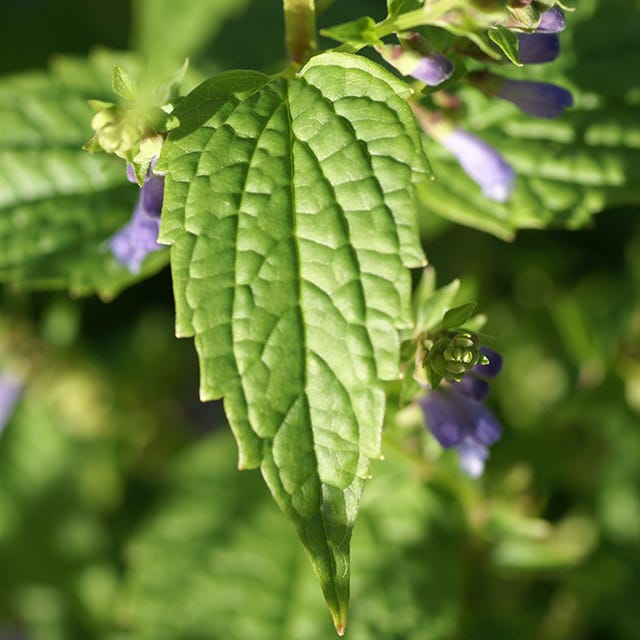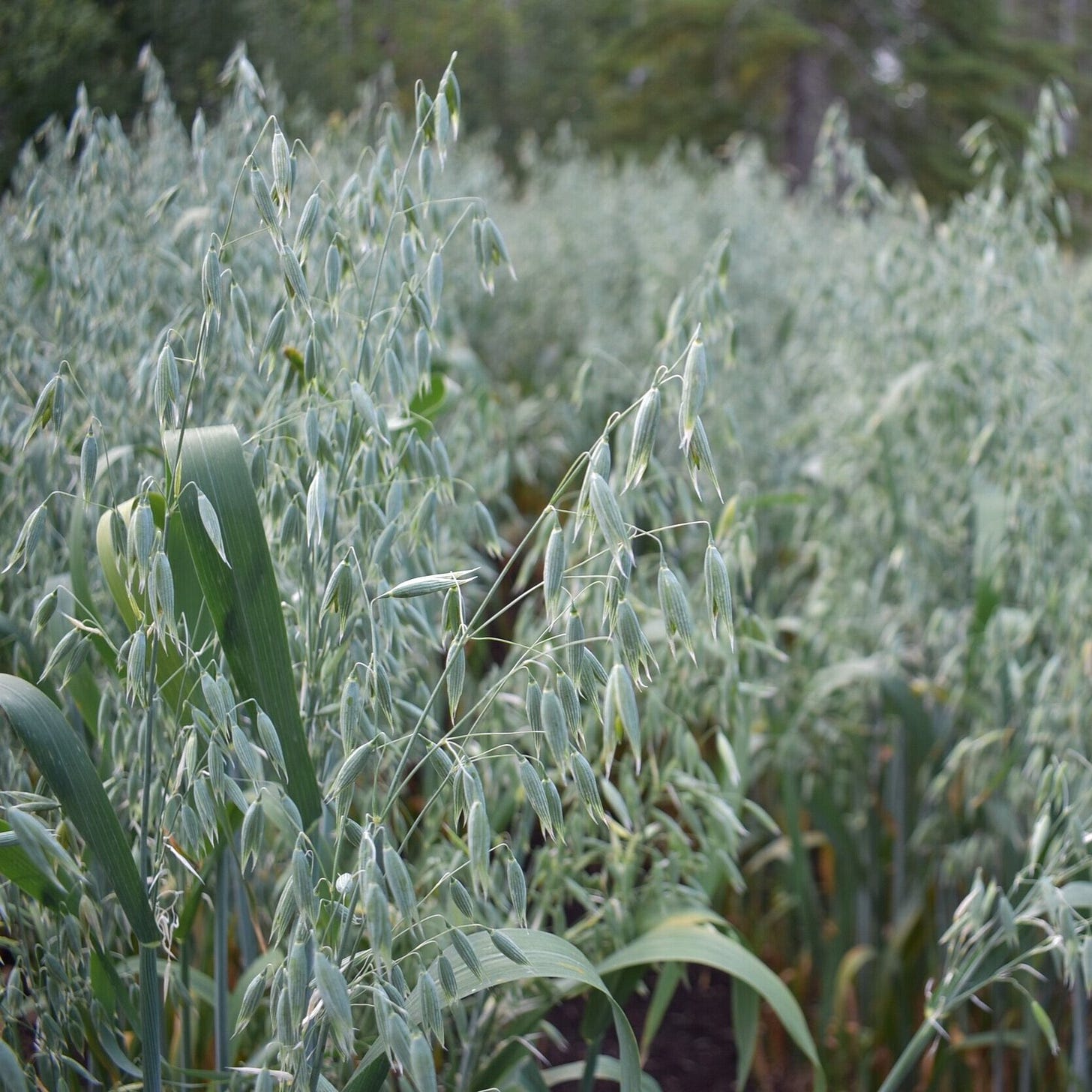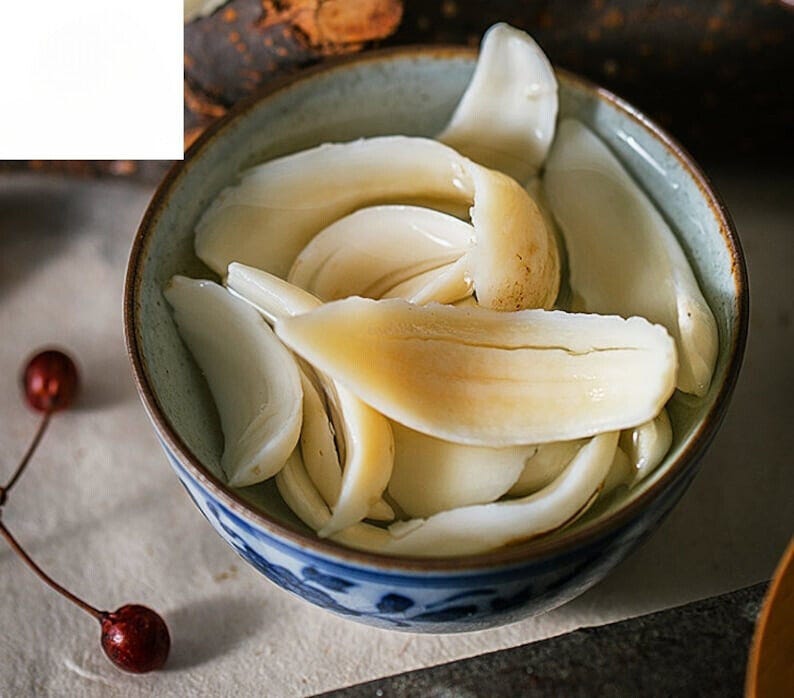Frayed nerves are a near-universal concern these days, and every herbalist needs a go-to remedy for them. I call mine Nerve Balm (sometimes Nerve Food), and although I’ve kept the formula close in the past, I’m going to share it today. If more people end up using this stuff as a result, that’s a good thing.
It starts with fresh Skullcap tincture from Scutellaria lateriflora, one of our best all-around “nervine” herbs. Skullcap is a safe and non-toxic member of the mint family. Sounds innocuous enough, and it is, but skullcap’s medicine is quite profound. As the name suggests it seems to work from the top down, with a tangible cerebral affinity. It quiets excessive mental activity in a balanced way without dulling the mind or senses (the way that, say, Valerian does).
As an aside, here’s a lovely meditative piece by Sophia Rokhlin in part about a local North Carolina skullcap species.
Skullcap’s good on its own: it’s the “perfect nervine,” as NYC herbalist William LeSassier liked to call it. But to take things deeper, we can add Milky Oatseed tincture, Avena sativa. This stuff has to be genuinely milky, mind you: this means whoever prepared the tincture ought to have put the immature (milky-stage) oats and water-alcohol mixture in a blender for about a half a minute and gotten a pale green frothy milkshake for their trouble. Even after straining, this stuff remains on the thick side and should be decidedly sweet like—yes—milk. For those who need it, anyway, Milky Oats proves to be one of the most delicious of tinctures (along with peach leaf, hawthorn berry, and one or two other candidates). You can just feel it nourishing the nerves as it elicits deep sighs of contentment. A true balm.
Skullcap primarily cools and quiets, and secondarily feeds the nerves. Milky Oatseed primarily feeds and settles. The synergy between these two is ideal; together they both settle down and build up the nervous system. A technical term we can invoke here is “tropho-restorative,” something that normalizes and restores tone. You can almost hear the myelin sheath saying “ahhhh.”
This herbal pair of Skullcap and Milky Oatseed is the heart of the formula, but I like to go a step further and invoke one of Traditional East Asian Medicine’s most useful nervines. A little bit of context is in order here, in that the concept of “nervine” is foreign to TEAM (just as the concept of “nerve” is to begin with). What we do have, however, are herbs that supplement the yin of the lung. It turns out that when the lung yin is fried, the nerves are fried. (If you’ve ever been through a fire or simply smoked too much then you know this to be true.) In many cases we can supplement the lung yin to support the nervous system.
One of the best lung yin medicinals is baihe, a bland, edible type of lily bulb. This seemingly mild item gets a lot of attention in the Jin Gui Yao Lue, one of our seminal Chinese medicine classical herbal texts. There, it is recommended in the treatment of something called baihe bing or “lily bulb disease.” In this condition the patient “desires to eat but cannot eat, desires to lie down but cannot lie down…” In other words, the lily bulb patient is fretful, restless, exhausted and yet unable to sit still. Not so far from ADHD, come to think of it.
Baihe or Chinese Lily bulb treats this syndrome, typically in combination with another yin herb (either Rehmannia root [more supplementing] or Anemarrhena root [more cooling]). But I find it goes very nicely with Skullcap and Milky Oatseed.
I’ll sometimes supplement the baihe tincture with a bit of shatāvari or tianmendong (both forms of Asian asparagus root), a lily-family cousin of baihe with similarly soothing, yin-nourishing effects. Unfortunately not all baihe is up to snuff, and I find this addition helps round things out and make it work like it should.
For severe cases of nervous overstimulation I’ll sometimes add a percentage of something stronger, but most of the time these three medicinals are enough to make a major impact on quality of life for the stressed-out patient. This kind of treatment may not get to the root, but it can buy some time for deeper underlying patterns to be addressed.
As for dosage, I’ll typically recommend 1-2 droppersful up to 4 or 5 times daily, decreasing over time down to 10-15 drops twice a day.
Nerve Balm
roughly equal parts:
Fresh Skullcap tincture
Milky Oatseed tincture (blended, opaque, sweet)
Lily bulb tincture
I'll also typically add a small amount of licorice root tincture to harmonize the formula and sweeten it, though this is not strictly necessary here.
Possible Modifications
For pronounced agitation with red tongue tip, add Peach Leaf, Melissa and/or danshen (Salvia miltiorrhiza)
For pronounced tension and rumination, add Passionflower or Peony
For lack of grounding and disconnection from the body, use or add Wood Betony
For adrenal depletion and exhaustion, add Rehmannia (dihuang) and Schisandra (wuweizi)
For chronic nervous weakness with poor sleep in a chilly constitution, add ashwagandha / Withania somnifera
For nervous hypertension or extremely agitated states, add Rauwolfia (experienced practitioners only)
Whenever I post about formulas like this, I get emails asking if I sell whatever it is. The answer is that I make enough to use in my practice, for those under my care. The skullcap and milky oatseed tinctures I stock are from my own garden and in limited supply. I’m not sure who else makes a good, rich milky oatseed tincture, but try your local herbalist or check out HerbPharm, the big Oregon-based tincture company whose line is available in many retail shops.
For those called to more individualized care, I am accepting new patients at this time. You can learn more about my practice here, or go ahead and schedule a consult here.
Peace and calm to one and all _/\_






Thanks for this recipe! I'm looking forward to trying it out. We all need nervines in the modern world!
Thank you for this delicious information!